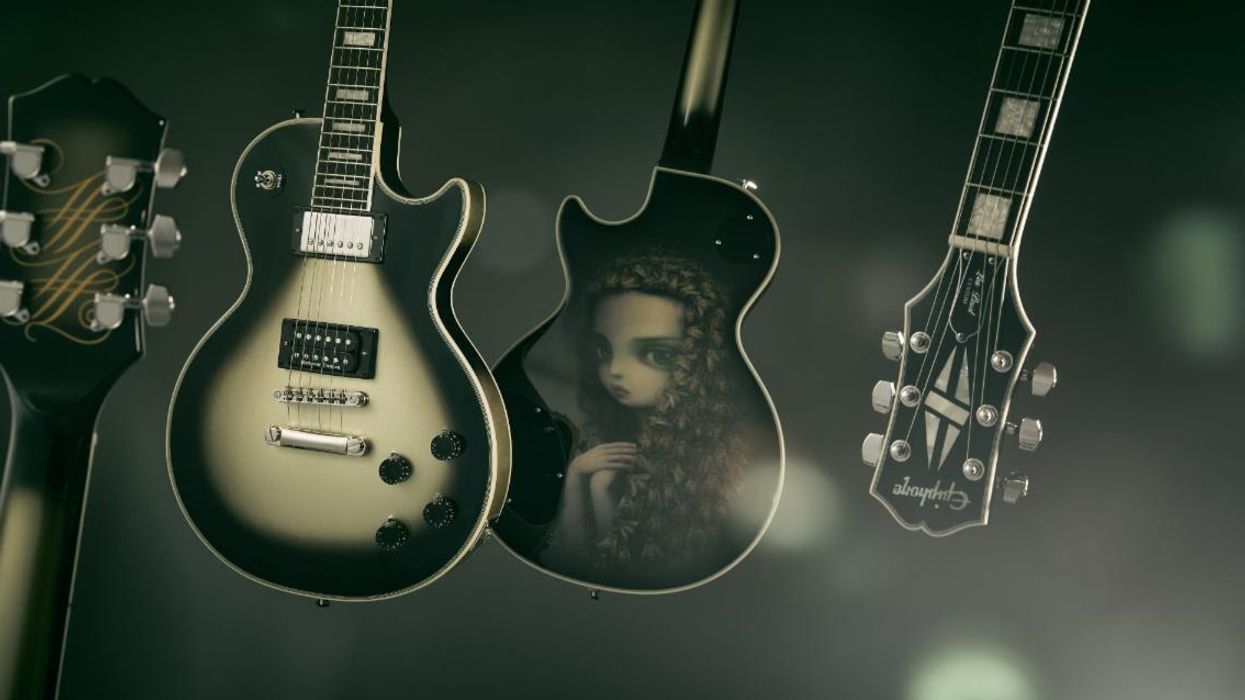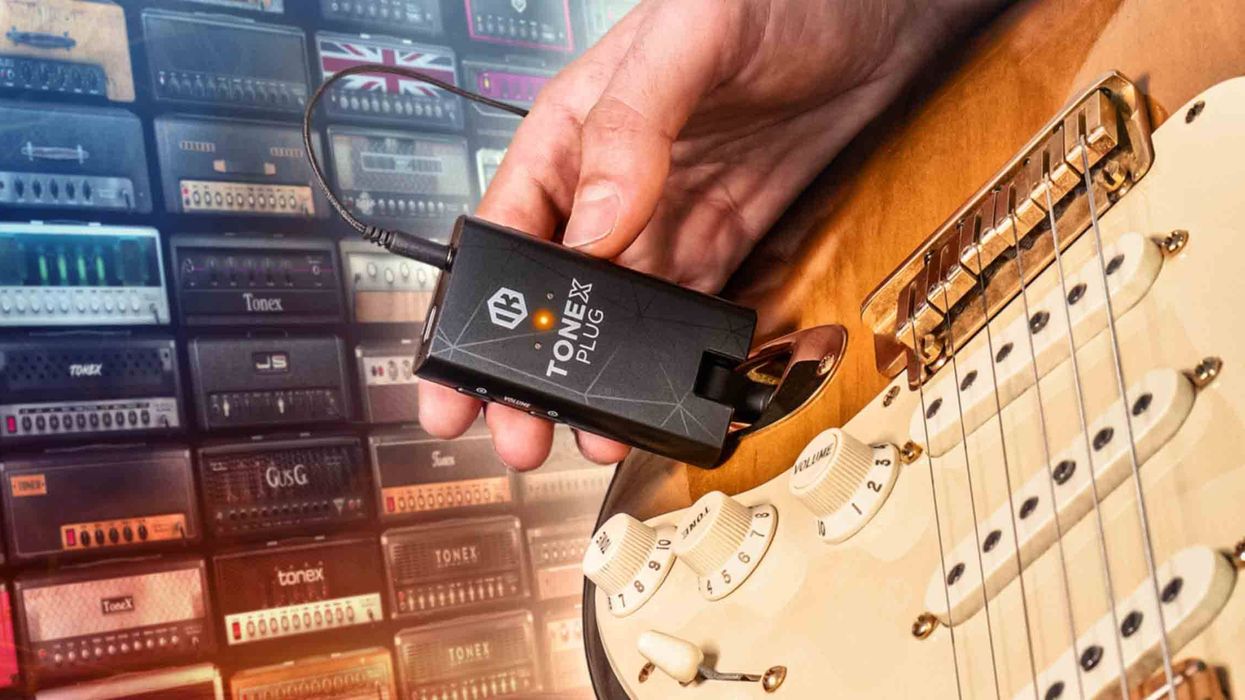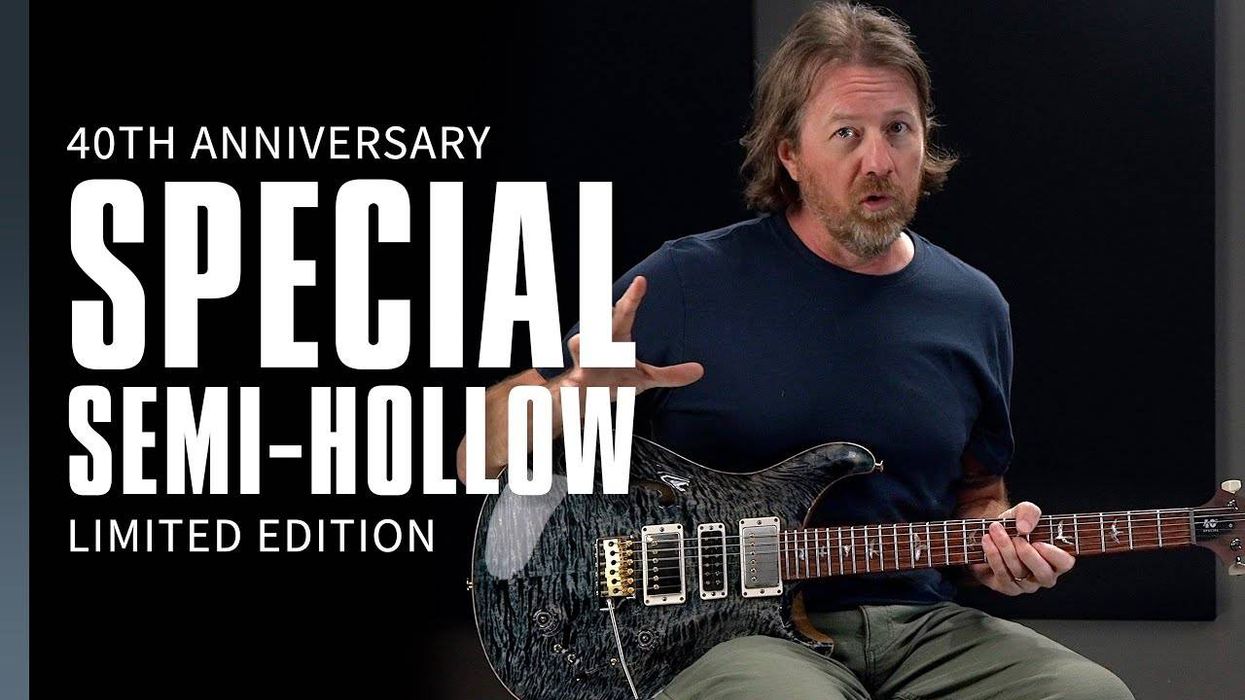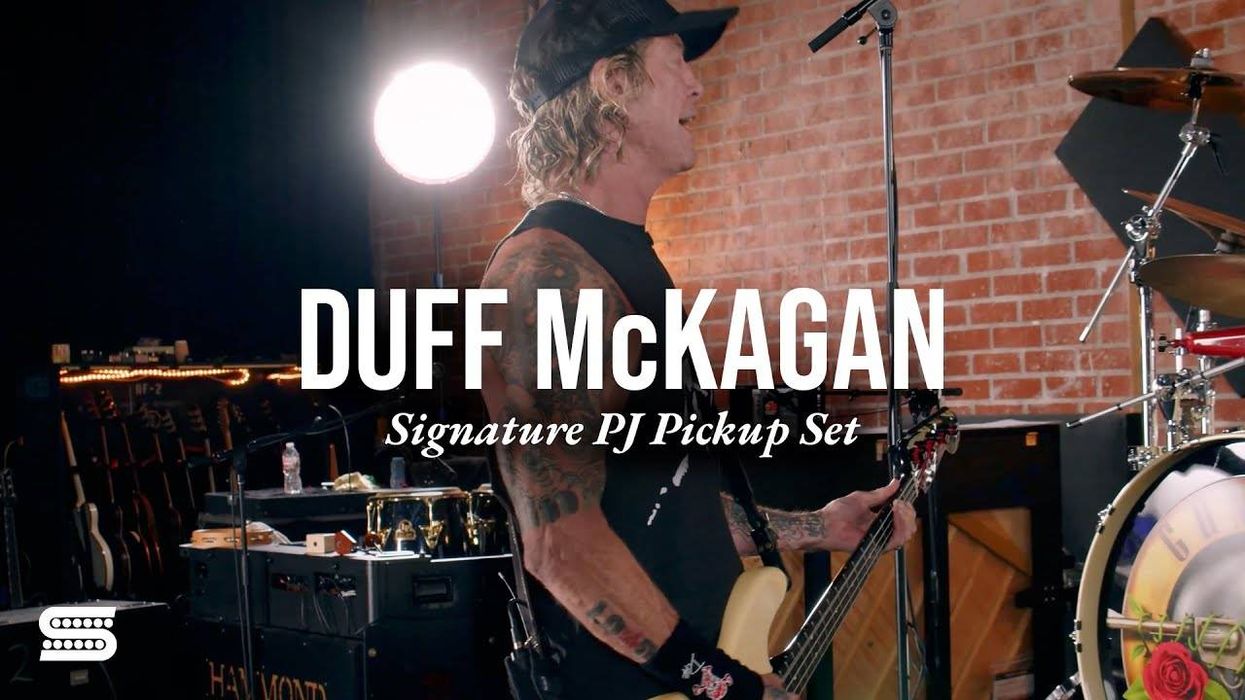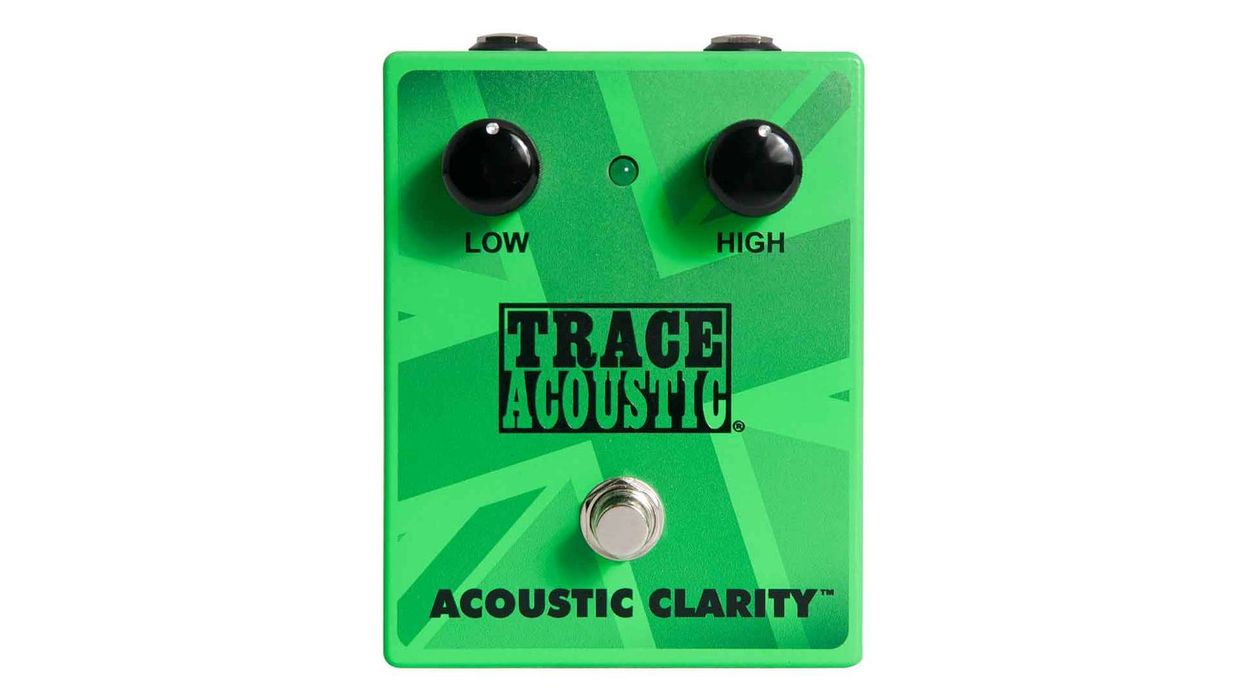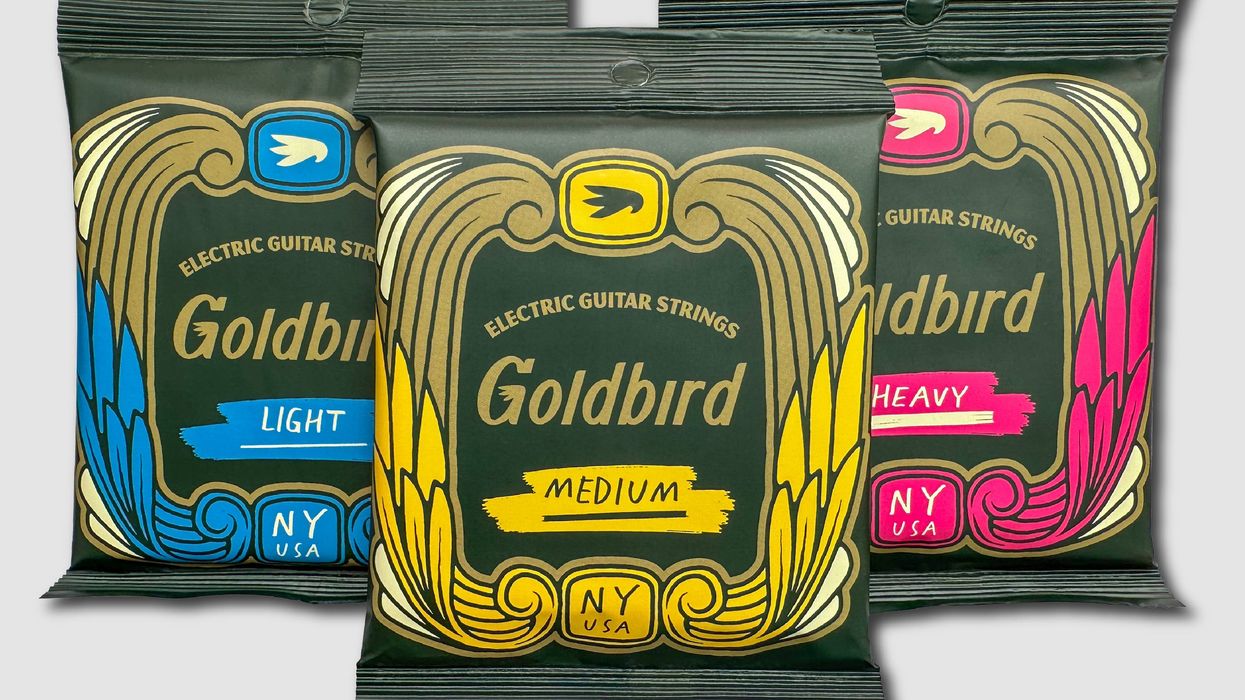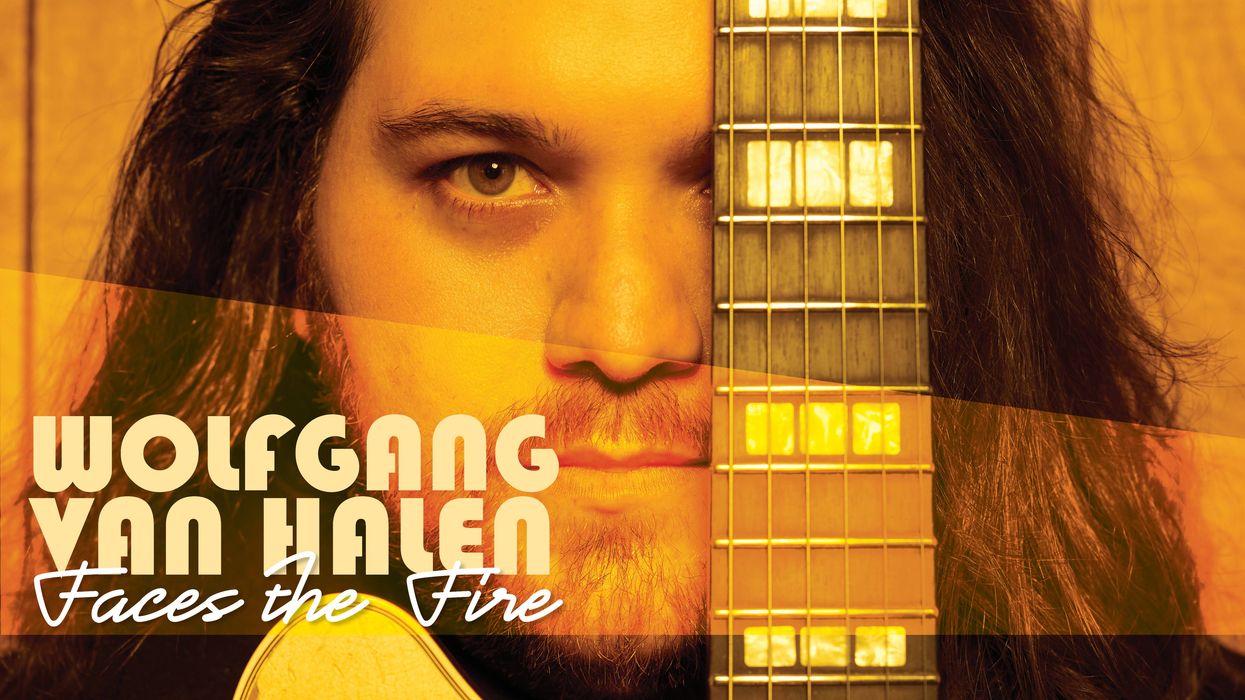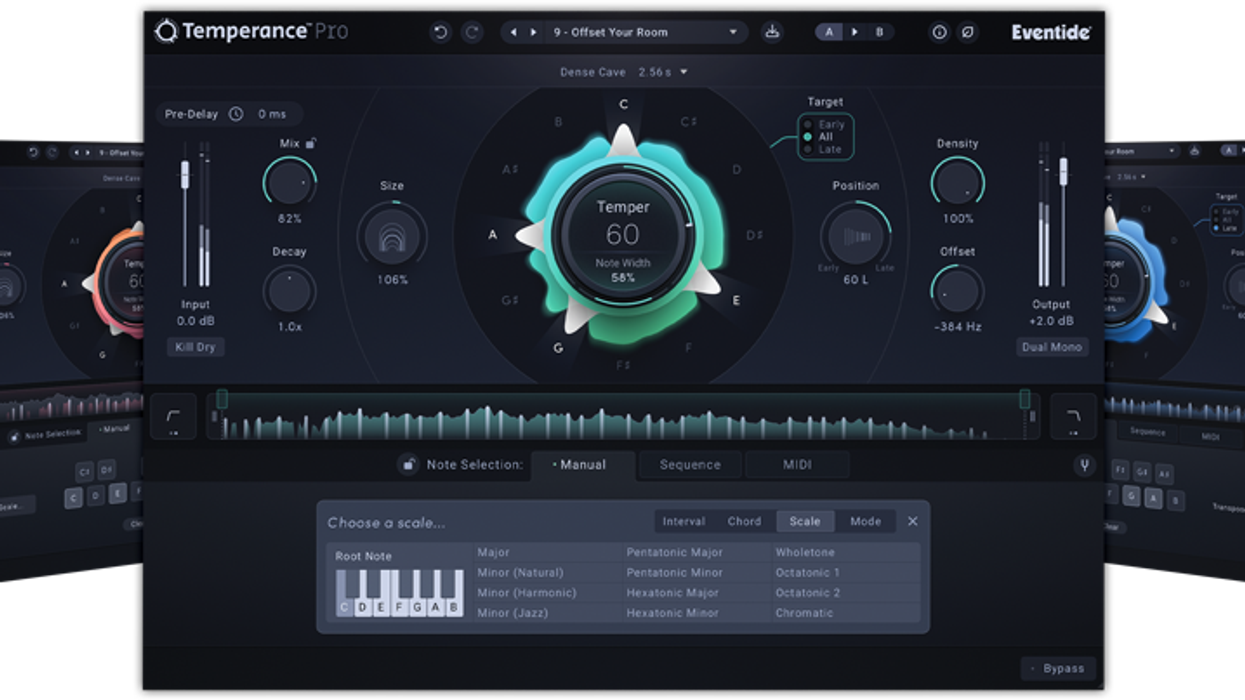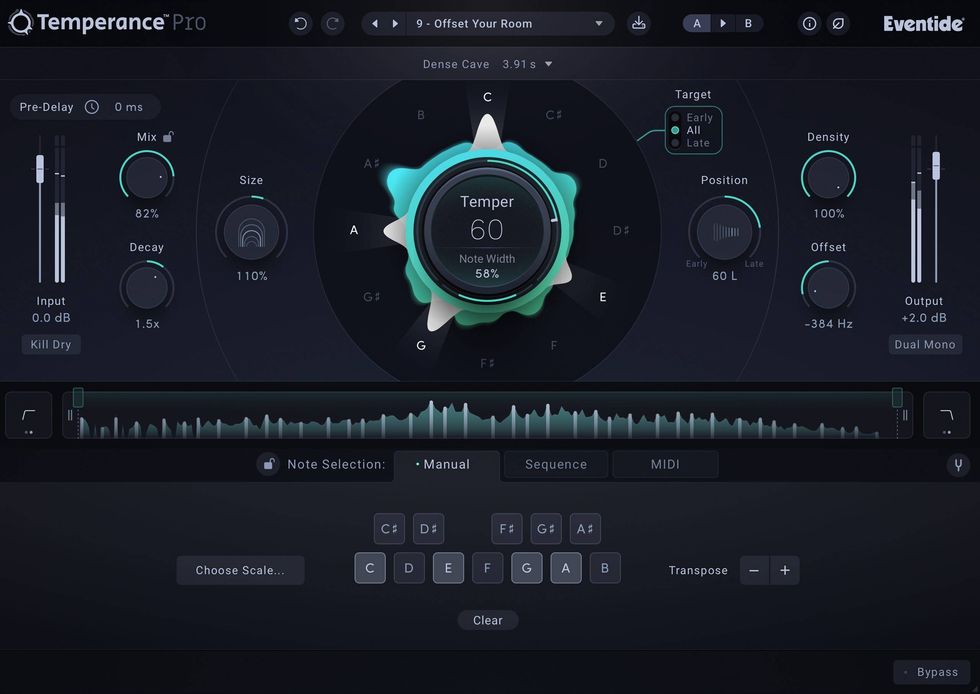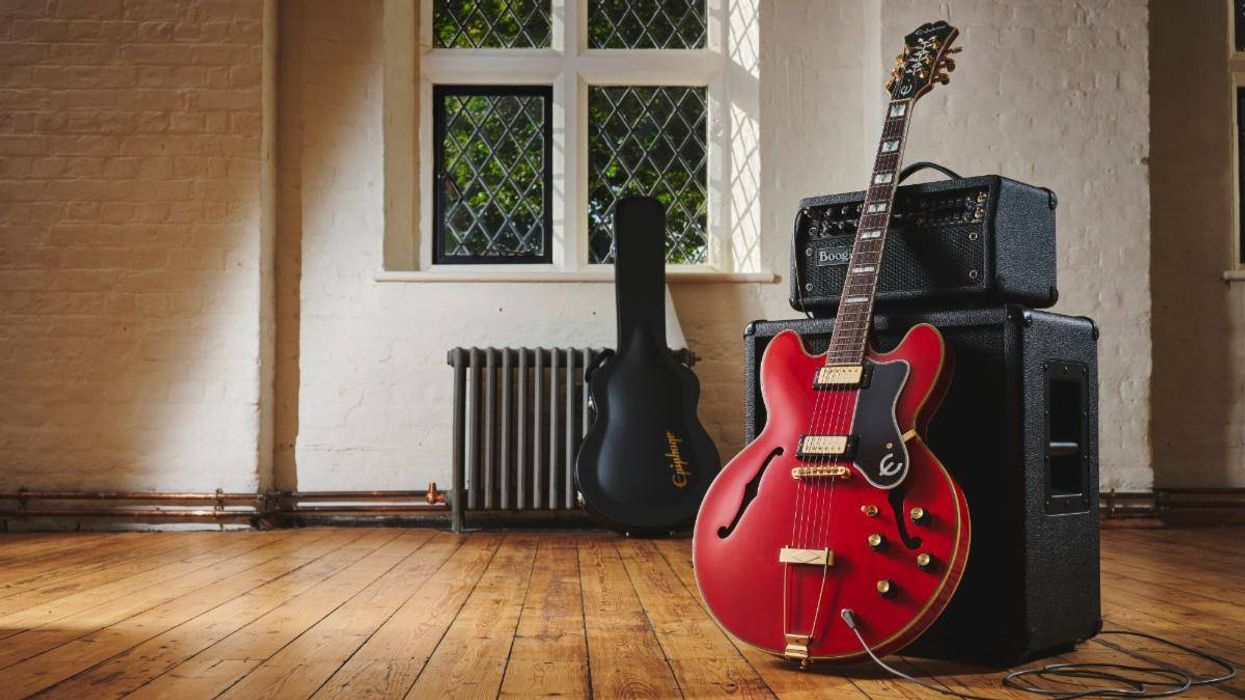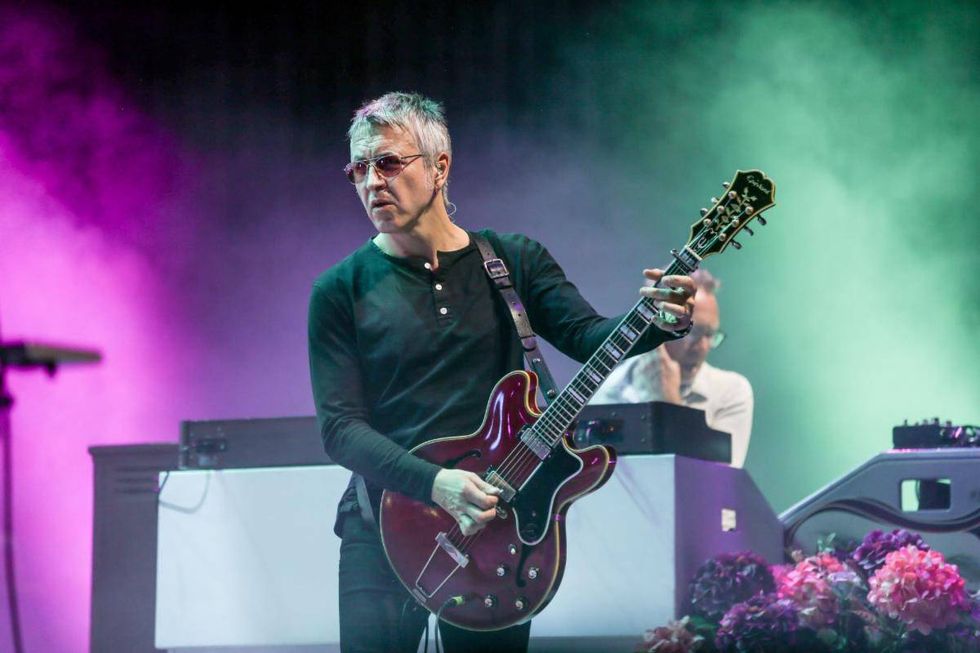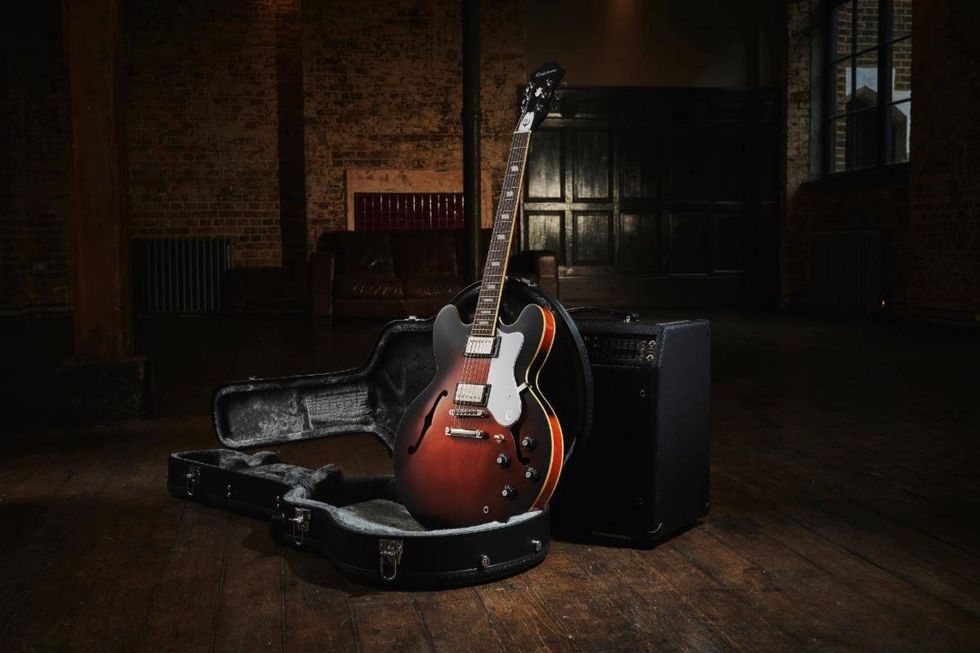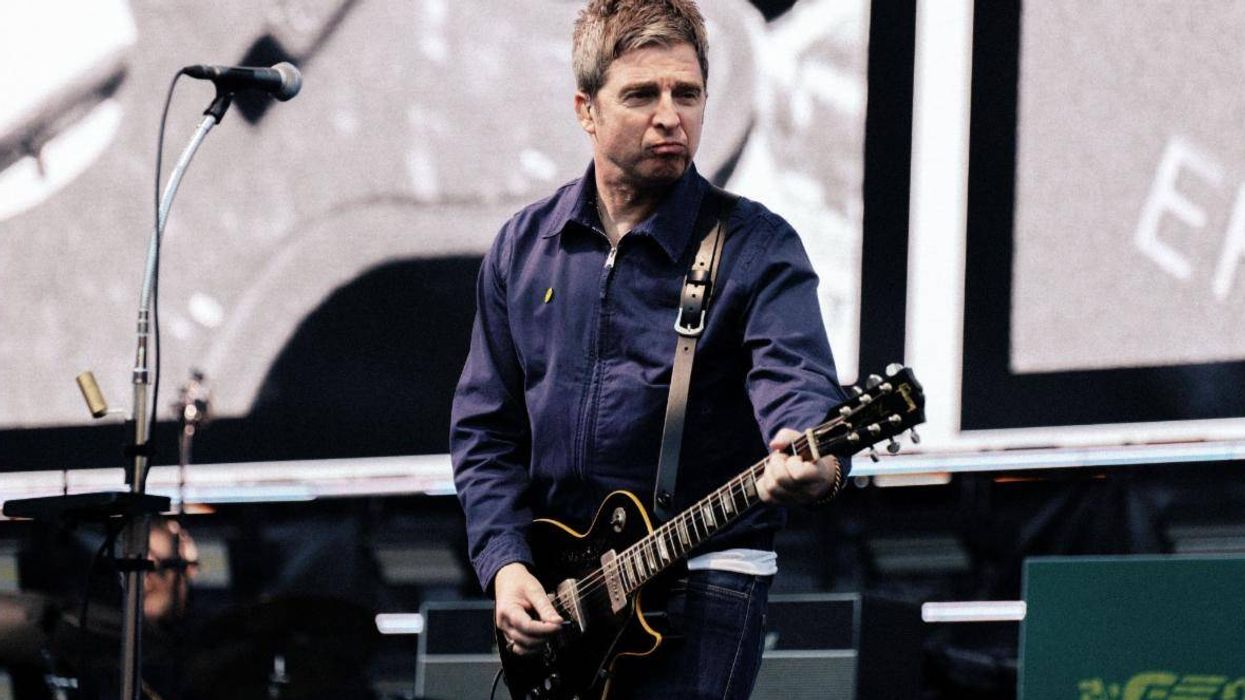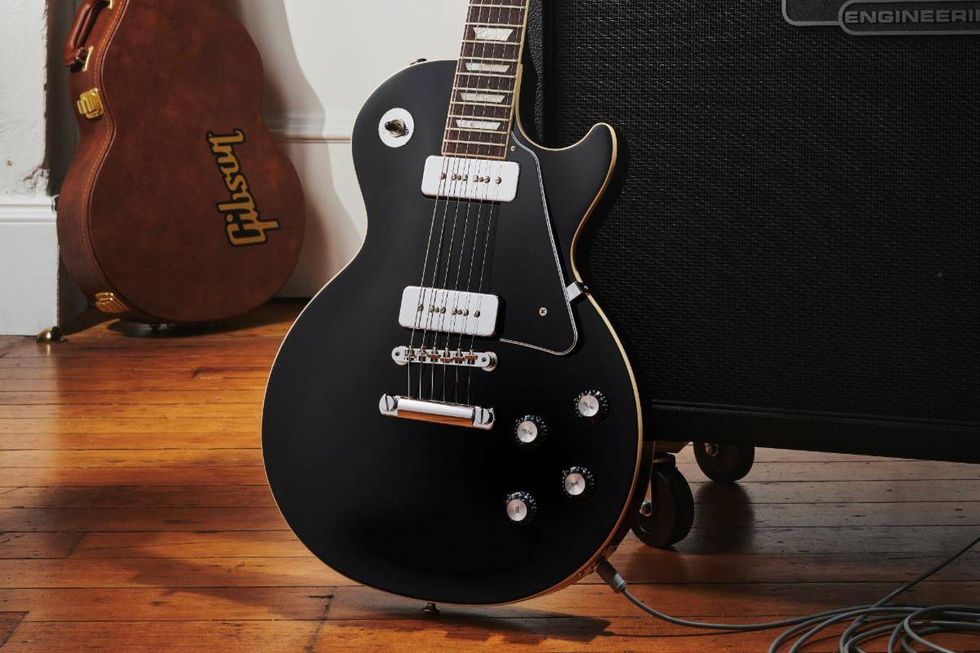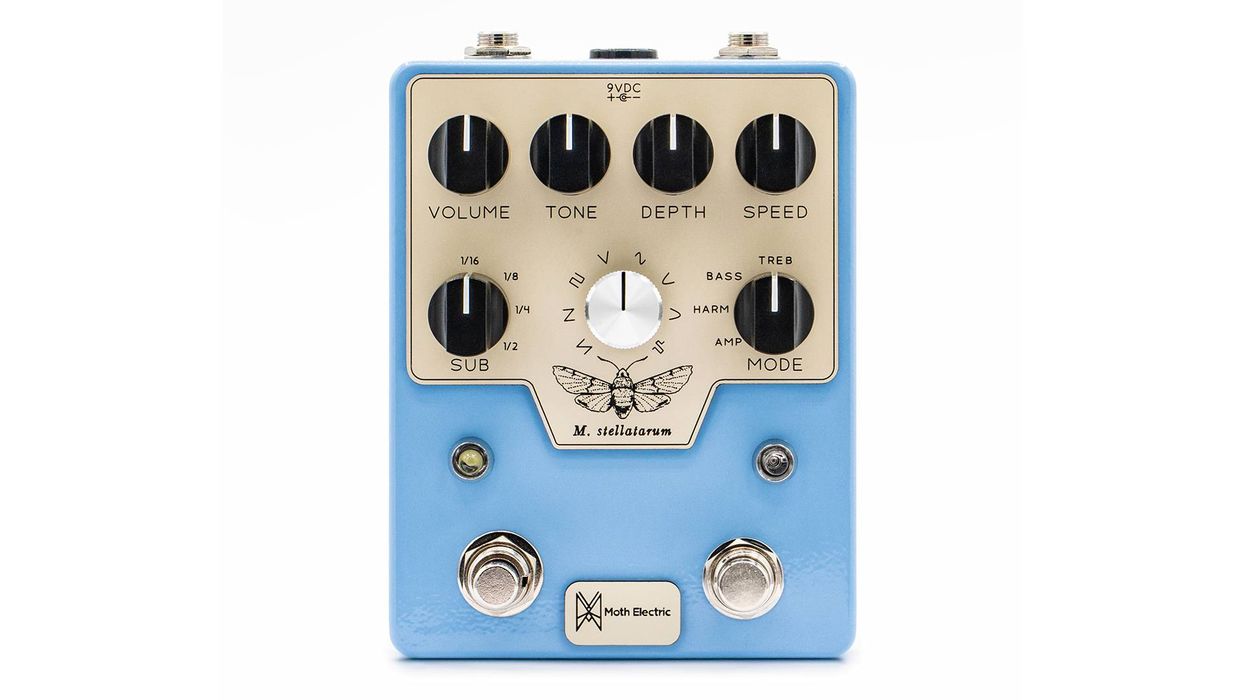The limited-edition collection of seven Silverburst Les Paul Custom art pieces, which feature the artwork of five visual artists curated by Adam Jones of Tool.
The first model to debut in the Adam Jones Les Paul Custom Art Collection is Mark Ryden’s “The Veil of Bees.” This guitar displays acclaimed artist Mark Ryden’s piece “The Veil of Bees” on the back of the guitar, in addition artwork on the rear headstock is designed by world-renowned artist Korin Faught. Blending themes of pop culture with the techniques of the old masters, Mark Ryden blurs the traditional boundaries between high and low art in a new genre of “Pop Surrealism.” Ryden’s “The Veil of Bees” originally premiered at Art Basel - Hong Kong in 2018. Explore the artwork of Mark Ryden, HERE.
The Epiphone Adam Jones Les Paul Custom Art Collection has a bound mahogany body with a maple cap, a three-piece bound maple neck with an Adam Jones Custom profile, and an ebony fretboard. It is equipped with a reverse-mounted Epiphone ProBucker Custom humbucker in the neck position and a Seymour Duncan Distortion in the bridge; both are wired to CTS potentiometers and Orange Drop capacitors. A Marquee Back Plate with the Mark Ryden’s name and the title of the artwork, “The Veil of Bees” is also included. The guitar is finished in Antique Silverburst as an homage to Adam’s beloved original Silverbust 1979 Gibson Les Paul Custom, a Protector hardshell case is also included.
Adam Jones Les Paul Custom Art Collection
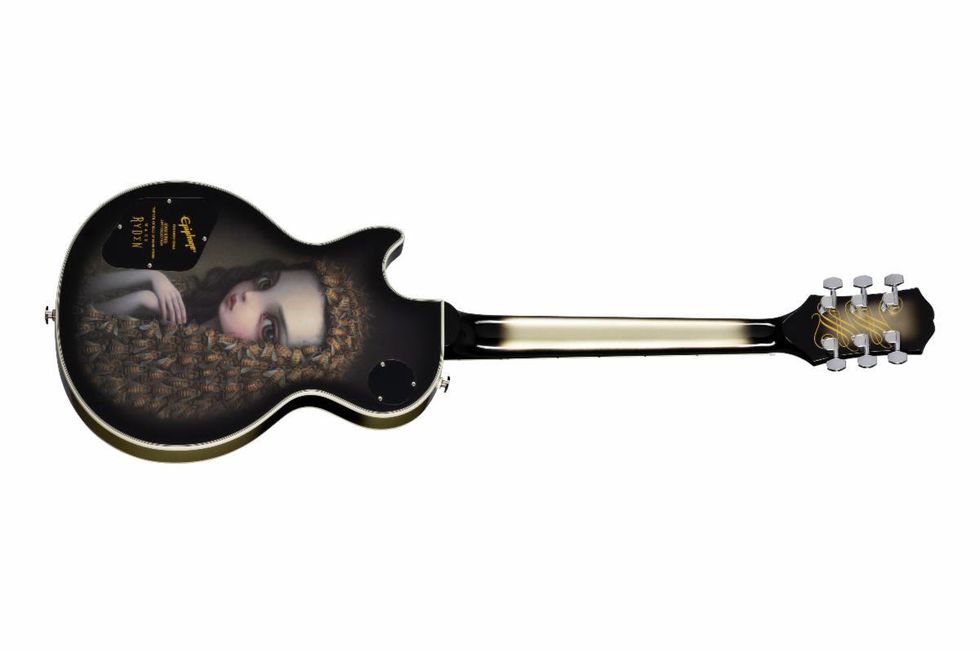
The Epiphone Adam Jones Art Collection consists of seven, Silverburst Les Paul Custom models, each featuring reproductions of different works of fine art on the back. Adam curated all of the featured artwork, and selected five distinguished artists Mark Ryden, Frank Frazetta, Julie Heffernan, Korin Faught, and Ernst Fuchs for the collection; additional artwork designed by artist Korin Faught, adorns the back of the headstock of each model. Only 800 guitars of each model from this extremely limited edition run will be produced.
